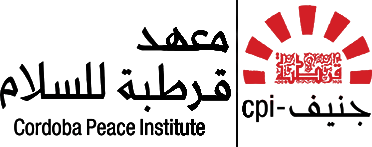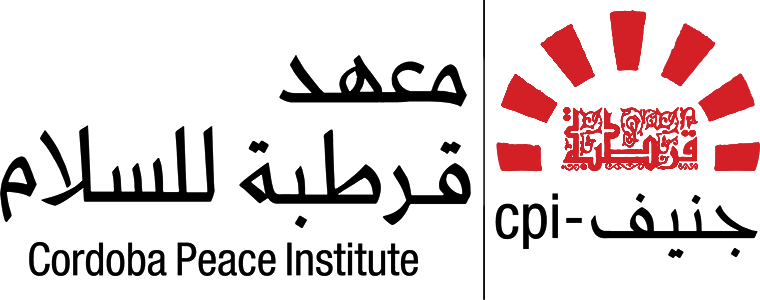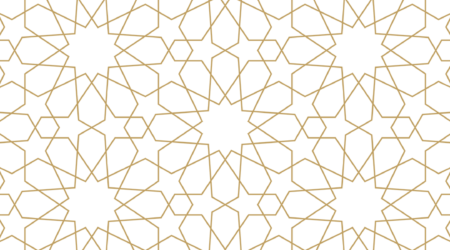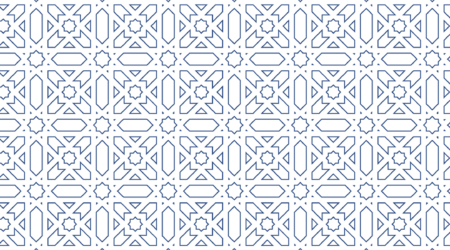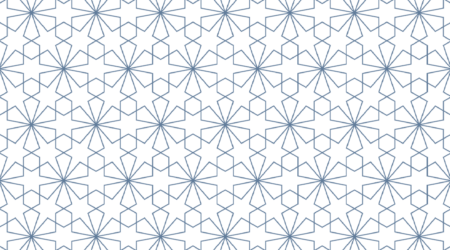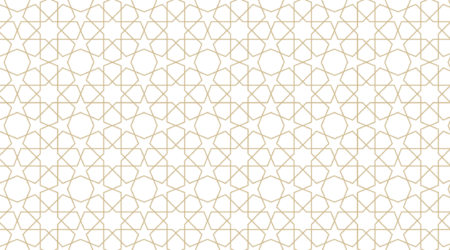The Women of the Islamist Movements: Towards a Women’s Spring?
Researcher in Political Science
Summary of the Paper
‘The Women of the Islamist Movements: Towards a Women’s Spring?’
by Merieme Yafout, Researcher in Political Science
Most observers agree that the Islamists were the ones who benefited most from the ‘Arab Spring.’ The ballot boxes brought them to power in a number of countries that witnessed revolutions or popular movements. But how has this transfer of the Islamists, from opposition to governing and running the affairs of their countries, affected the reality of Islamist women? And how has women’s participation in popular movements affected their situation within the Islamist groups? This is the main question this study tries to answer. The following Islamist movements serve as examples: the Tunisian Ennahda Movement; the Party of Justice and Development with its preaching wing, the Movement for Unity and Reform, in Morocco; and the Al-Adl wal Ihsan (‘Justice and Spirituality’) Group in Morocco.
This study, aims to go beyond stereotypes of the Islamist woman with field research1 in order to answer the following questions:
- To what extent and by which means did women in Islamist movements take part in the Arab revolutions?
- What were the proportions of their political participation before and after the revolutions? How present were they in the movements and in political institutions?
- Which factors influenced the discourse and initiative of women in the Islamist movements before, during and after the revolutions?
1. The women of the Tunisian Ennahda Party
In regard to the 2011 parliamentary election in Tunisia, which was won by the Islamist Ennahda Movement Party, the presence of its female members calls for attention. They were widely visible in the election campaign, ran as candidates in numerous districts, and won 43 out of the 48 seats in the National Constituent Assembly that are held by women. Moreover, one of the Ennahda party activists, Mehrezia Labidi, was elected vice chair of the Constituent Assembly. This analysis discusses how the women of Ennahda shifted from being part of an underground movement into being members of the National Constituent Assembly, the factors behind this transformation, their position within the movement, and the discourse they have produced.
The imprisonment, exile, and suffering the Ennahda women went through during Bourguiba’s and Ben Ali’s mandates, in their view, were their biggest contribution to the revolution. Many of them were arrested in 1987, 1991, or 1993; they were tortured and harassed, even after their release. A key point in the interviewees’ narrative is their continued educational and preaching work inside the prison in the form of Qur’an memorisation sessions and ethics lessons. The circumstances of imprisonment that these women experienced strengthened their personalities, as observed in their discourse. They consider themselves associates in their movement’s achievements and aspire, like other women, to take part in political decision-making and to play a role in the construction of post-revolution Tunisia.
Women were present in the movement since its inception. The constituent body that proposed the establishment of Harakat al-Ittijah al-Islami (Islamic Tendency Movement, the former name of Ennahda) in 1981 included four women. In that period, the women’s activities included education and preaching through mosques, as well as intellectual work (organising intellectual clubs, workshops) with students, and advocacy and unionist work via college student activities. However, when the regime started repressing the movement, those women who escaped arrest were forced either into exile or into continuing their work in absolute secrecy. Secret meetings were held that focused on education and also strove to ‘spread the Muslim Brotherhood thinking.’ Some of these gatherings were women-only, others mixed. Later, these secret meetings expanded to the student sphere, especially after some prisoners were released in 2004.
An important observation from various interviews is that a significant number of the respondents describe their families as ‘very secular.’ This ideological environment, which has been shaped by different eras, affects the women’s personalities and their discourse. Another observation is the mixing of genders. The movement handles this issue very generously; it holds mixed meetings, mixed lunches or dinners, without any of the embarrassment Islamists usually display in this regard.
As for the direct contribution of Ennahda women to the revolution, respondents assert that their presence was not motivated by a particular political affiliation. For many, the slogan was that women should be a part of the revolution, and their main motivation was the fight to expand the scope of freedoms. Communication with people under the name of Ennahda only took place in the post-revolution phase leading up to the election, in which women, according to respondents, played a major role.
Women are present in all institutions of the Ennahda Party; however, their presence is at odds with their level of representation, as the Local Offices include at most two to three women, with ratios ranging between 13% and 20%. The movement’s Executive Office includes two female members out of 15 total. It should be noted that women working in the Offices are not only in charge of tasks usually defined as typically feminine, i.e. social or charity issues, but they also manage legal affairs, the communication with other parties and organisations, and other tasks. Beside the numbers they have attained in parliament, four Ennahda women are Committee Heads. Some Tunisian media outlets consider Ennahda’s nomination of such a high number of women a mere tactic that does not express an actual willingness to advance women. But whatever the motives behind this large presence of women in the political sphere, the positive impact it has on their personality is confirmed by a number of studies related to gender sociology, which argue that the mere participation of women in the political sphere signifies a distribution of power and of ideas. Political participation leads to ‘speaking out’ or a ‘discursive exchange,’ which is an indicator of women’s empowerment because it means exercising citizenship and public responsibility.
The former prisoners’ demand to be accepted as partners in the transformation process, the fact that Ennahda women won seats in the National Constituent Assembly, and the dissatisfaction of an important part of them over the absence of female party members from the cabinet, all demonstrate that they have acquired a sense of claiming their rights. They are determined to be present in society and especially in the public sphere, and they are eager to make sure that change will not happen without them. Some factors that led to this breakthrough are:
- The conditions of repression in which they grew up.
- The thinking of Professor Rached Ghannouchi, who encourages women’s presence in society.
- The rivalry with secularists which has a positive aspect: diversity. It preserves the social balance, acts as a good instrument of social integration, and erases the boundaries between the different communities that make up society. One of the most important positive aspects of this conflict regarding this paper’s topic is the great pressure, reported by some Ennahda women, that secularists exerted in order to impose gender parity in the Constituent Assembly in their belief that the Ennahda Party did not have female activists; or if it did, it would not let them run in the election, given its Islamist orientation. The surprise created by Ennahda was that it presented a large number of female candidates, who swept the election. The significance of this secularist pressure becomes clearer when we realise that its absence during the period of picking a government team has resulted in the non-nomination of Ennahda women for the current cabinet. The women of Ennahda express their discontent about this; some of them attribute it to authoritarian macho mentalities, that refuse to accept women in power.
In general, Ennahda’s discourse on women and women’s issues is aimed at reassuring women and the secular elites. Ennahda’s Islamists have, more than once, announced that they will not undo the achievements of the Code of Personal Status, which was confirmed by the movement’s party platform.
2. The Women of the Justice and Development Party (PJD) / Movement for Unity and Reform (MUR)
Although the Justice and Development Party and its preaching wing did not officially support the popular movement in Morocco, they are among those who benefited most from it. The PJD won the early elections that were held on November 25, 2011 after a constitutional amendment (July 1 of the same year) and thus, for the first time in Moroccan history, leads the current government as an Islamist party. What share did its female members have in the party’s change of status? How did it affect their position within the party and in the wider political scene?
Women currently represent about 43% of the PJD and MUR membership. Some of them witnessed the beginning of Harakat al-Shabiba from the 1970s on; others watched the movement’s intellectual transformations after its rupture. The interaction with feminist initiatives provoked, within this Islamist orientation, a growing interest in women’s issues. Moreover, the presence of women in the student sector played an important role in promoting women within the movement, and opened up leadership positions to them. The late 1990s were marked by a transition: from living a restricted lifestyle to preaching, gaining access to religious education, as well as charitable activities, women entered the spheres of formal social work via associations, as well as union and political activities, through the Justice and Development Party. This transition was paralleled by an opening up to the public sphere. New spaces were made accessible, which were different from those that Islamist women used to work in (the home and the mosque).
The presence of women in the decision-making and executive bodies of the party and the movement does not exceed 11% in nation-wide institutions like the General Secretariat of the PJD and the Executive Office of the MUR, each of which includes two women. On the regional and prefecture / provincial level, the representation of women reaches 15% in some regions, while being almost non-existent in others. These ratios seem low if we compare them to the number of women in these currents; but if we compare them to rates of representation in other parties that populate the Moroccan political scene, we find that they do not differ much. This includes parties that are described as progressive, with female representation ranging between 10% and 20% in compliance with the quota. Then again, the women of PJD / MUR generally argue that expertise should be the only criterion of representation, regardless of gender. On this basis, many of them are not troubled by the fact that women are weakly represented.
As to their political presence and participation, women from the PJD entered the field of official politics in 2002 when six of them won a seat in the legislative elections; the same number were elected in 2007. In the 2011 legislative elections, the women of the PJD were able to triple their parliamentary representation, as they won 18 seats. Perhaps, this can be labelled a token utilisation of the women to reassure the West and local elites. But whatever the reasons for pushing women into politics, their mere presence increases their political empowerment.
On another level, the women of PJD / MUR are present in the work of associations via two national entities: the Organisation for the Renewal of Women’s Awareness (ORCF) and Forum Azzahrae for the Moroccan Woman (FAFM). Both shape the positions and choices adopted by the women of PJD / MUR on women’s issues. In general, female PJD / MUR members criticise those who focus on women’s issues without addressing family problems – which is what feminists do, according to the respondents. Hence, the women of PJD / MUR defend an approach where family rights and issues come first. They also link women’s issues to moral questions, arguing that moral decay harms women and poses a threat to family and society. Thus, a large portion of women’s initiatives were aimed at restoring morality and calling for virtuousness with things like ‘prevention campaigns against the trend of unsteadiness.’ The main factor that threatens the stability of families and the status of women, according to the respondents, is the West which affirms colonial policies through the gateway of culture. Therefore, the women of PJD / MUR criticise a number of Western concepts, first and foremost the idea of equality which, according to them, does not take into account the right to be different. They see it as a ‘mechanical equality’ that aims at bringing about a resemblance between genders, but ignores the things that naturally distinguish men from women. In this regard, they embrace two concepts which they see as guaranteeing the rights of individuals while respecting, at the same time, their right to difference: the concepts of evenness (ʿadl) and complementarity (takamul).
Regarding the popular movement, one cannot talk about an obvious participation of the PJD / MUR women if one takes into account the confusion that accompanied the party’s position towards the February 20th protest movement. It must be noted that although some officials opposed the movement, and others supported it, the conciliatory role played by some women leaders in such key moments of the party’s development was critical.
In preparation for the current legislative period, the party took a number of steps concerning its internal structure, among them the establishment of the PJD women’s section, the ‘Organisation of the Women of Justice and Development’ whose constitutive meeting took place in October 2011. It seems that the political prospects opened up by the popular movement convinced the party of the need for such an institution.
Overall, the popular movement in Morocco has not delivered much to the women of PJD / MUR, who have remained out of touch with the events. After the government was formed, the major observation noted by many commentators was the nomination of one woman as a minister. But regardless of what the Arab Spring has brought them, women have certainly made headway within MUR and PJD. This concerns their presence in decision-making bodies, on the political scene, and in the associational field. This progress can be attributed to the following factors:
- The thinking that frames the approach to women’s issues has evolved. From an Eastern, conservative approach during the seventies and eighties, thinking increasingly opened up during the nineties.
- The intellectual and ideological rivalry with feminist currents of a leftist conviction led to a more profound thinking about women’s issues and the gradual involvement of women in this thinking.
- Entering into politics through the PJD required a high commitment from numerous women in the party’s national and regional structures, as did the venture of elections and national lists.
Ultimately, in regard to the party’s discourse since it came to power, a certain restraint on several topics can be noted. These include ‘moral issues’ and ‘reassuring’ statements by the head of the party about personal freedoms. However, these statements could not remove the fears of women’s associations and some civil society actors about the possibility that the party might revoke some of the achievements women had made. The fact that the PJD’s Bassima Hakkaoui heads the Ministry of Solidarity, Women, Family, and Social Development reinforces these concerns in the view of some feminists. Some of the party’s female leaders hold debatable views on women’s issues such as polygamy, which they regard as a right of the second wife; in fact, some male PJD ministers have two wives.
3. The Women of the Moroccan Al-Adl wal Ihsan Group
Understanding Al-Adl wal Ihsan’s contribution to the popular movement in Morocco in 2011 is essential, before discussing the status of its female members in the organisation and in society as well as the impact their contribution to the movement has had on their situation.
The Al-Adl wal Ihsan Group was one of the biggest supporters of the February 20th movement, specifically during its first ten months. The first indicator of its intention to participate in the movement can be attributed to declaration given by Nadia Yassine, daughter of the group’s leader, to the Spanish press, where she emphasised that every peaceful initiative could count on the movement’s support – even before the group decided to officially take this position. This standpoint gives a hint about women’s power to affect decision-making inside the group: Nadia Yassine is seen as the most important woman within the Al-Adl wal Ihsan Group and is the founder of its women’s section.
The women’s section has gone through various stages. During the late seventies and up to the mid-eighties, its activities were not organised; female experience came about spontaneously and creatively in contexts of spiritual instruction. But as soon as the transition to organised women’s work occurred in the mid-eighties, under the supervision of men, gender separation in meetings became a main concern. Women were excluded from decision-making, theorising and programming bodies, which curbed any female initiative. Some areas such as the student sector formed an exception, as female students played a prominent role from the early nineties onward. Members increasingly brought up issues like gender mixing, giving women a voice, female contributions to the decision-making process, and others. In the mid-nineties, the publication of the ‘Guide for Believing Women’ by the group’s leader gave a strong thrust to women’s work. This Guide discusses the women’s cause, relating the decline of their historical role to the degradation of the community; it calls for a new awakening, with women present at the heart of the change, leading – together with men – rather than following.
Relying on this thinking, the women of Al-Adl wal Ihsan have elaborated their own thoughts on the advancement of women. They criticise the injustice and marginalisation forced on women in the name of religion and a blindly emulating, rigid jurisprudence that emerged in the epoch of decline. At the same time, this line of thought defends the idea that Islam is an emancipatory religion that came to liberate women from the bonds of marginalisation and disdain they were suffering in pre-Islamic times. Rather, we are dealing with feminist, religious, and political awareness combined in the frame of a militant approach which argues that women’s top enemies are the patriarchal mentality and political oppression.
The women of Al-Adl wal Ihsan sought to achieve a certain independence in their work based on this imagination. They regard their independence in elaborating their own vision of women’s advancement – along with the independence of their programmes, choices, initiatives, and decisions – as indispensable in the liberation of the women’s will and in building their self-confidence. This independence project, however, has met with strong internal resistance, even though it does not imply the establishment of a women’s section apart from the Group, but encourages women to become involved in all the bodies of the movement. In addition to the women’s section, women are represented in most governing bodies of the Group, such as the General Secretariat and the Shura (Consultative) Council, at about 30%. However, the Irshad (Guidance) Council, the Group’s highest executive body in educational matters, does not include a woman. This raises questions about the existence of some sort of upper limit to the presence of women within the Group.
This phase is also characterised by the extension of women’s activities from the spheres of preaching, religious education and charity into those of social work in general, unionist, political, and intellectual work. The women of Al-Adl wal Ihsan are now present in the spaces of associations and dialogue and in the street as a space of protest.
The strategy of the Al-Adl wal Ihsan women is leaving the phase of merely teaching women about their religious duties, to enter a phase where they criticise the overly rigid classical jurisprudence and construct a ‘liberation project for women.’ Hence, they have adopted a collective women’s ijtihad (independent judgement in Islamic law) project that focuses on rereading the religious texts from a woman’s point of view and on reopening the door of ijtihad. This view is passed on via so-called ‘Councils of Sisters for Eternity’ (Majalis Akhawat al-Akhira), intellectual gatherings that are held monthly to study the lives of the prophet and his companions from a ‘women’s point of view.’
On a practical level, the women of Al-Adl wal Ihsan operate in the field through a network of associations that are active in the neighbourhoods and look after women. Furthermore, they organise training activities for the members of the group, e.g. family gatherings where male and female group members meet and through which women try to establish their approach to the family. They defend the need for men to be present in the home and to contribute to household tasks and the upbringing of children; they also encourage family planning and try to change mentalities. At the end of the day, they argue, families cannot move in the right direction without those things, nor can a woman be empowered if she carries the family burden alone, even if she is, in their view, the essential factor in this institution. With this approach, they try to break with the values that patriarchy is built on, promoting a greater presence for women in the public sphere, and a balanced complementarity between woman and man in the private sphere.
The atmosphere of openness brought about by the February 20th movement has allowed the work of these women to flourish. Their strong presence in the marches and pickets of the February 20th movement was noted, even during the critical phases when the movement was heavily repressed. One of the most remarkable points during this period was that Islamists overcame the question of gender mixing in the marches: the lines of protesters were mixed, rather than distinguishing between women’s and men’s lines. Interviewed respondents indicated that they had no problem with a positive gender mixing that respects morals and religion.
The strong presence of the Al-Adl wal Ihsan women, who have also organised purely female demonstrations in terms of themes and content, as well as in terms of organisation, arrangement, and participation, has made them the target of biased smear campaigns attacking their honour. Videos and images were fabricated which offended the honour of the section’s leaders.
We can summarise the factors that affect the presence of Al-Adl wal Ihsan’s female members, both in society and in their movement, as follows:
- The thinking of Abdessalam Yassine, influenced by traditional Sufism, which looks at women in a positive way.
- The circumstances of repression the Group’s women have experienced during many episodes of this movement’s history.
- The independent work of the women’s section.
Conclusion
Aside from the impact of the ‘Arab Spring,’ we can conclude that there is a strong dynamism with regard to women’s work in Islamist movements. However, a number of respondents’ statements indicate that traditional macho mentalities do exist among functionaries of the Islamist movements – including women. In some instances, the presence of gender conflicts can be observed in all these movements; this leads to questions about the sustainability of said dynamism. In this context, four possible scenarios could be outlined:
- This dynamism continues and the above-mentioned gender conflicts contribute to imposing female strategies and overcoming traditional thinking. This would push the movements to become more open and more internally democratic.
- Internal divisions arise due to these conflicts. The women would establish independent women’s organisations, similar to what happened in the mid-eighties in some leftist organisations.
- The traditional macho mentality prevails and all past achievements are undone.
- The scenarios of undoing and independence occur simultaneously. Given the existence of macho mentalities with a large number of women, those who embrace an emancipated view of the female cause would start their own, independent structures. Women with traditional mentalities would stay in the organisation and this undoing of achievements would come about.
1 The figures and data presented in this study were last updated in May 2012. Some or all of them may have changed at the time of publication.


